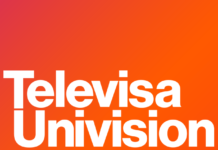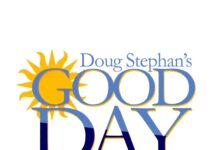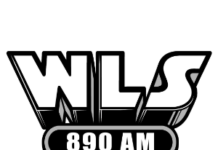
If radio is at the core of audio with decades more experience than our competitors, why do so many radio podcasts fall flat? Radio Ink talks with Fatima Zaidi, Founder and CEO of Quill – a podcast agency creating high-quality branded audio content for Fortune 500 companies such as Microsoft, TD Ameritrade, and The Globe and Mail. She shares lessons she’s learned that can turn your station’s on-demand product into profit.
Radio Ink: You’ve worked with Expedia, PwC, and so many other household names. Radio brands are household names, too, just at a local level. Stations and sometimes talent have the same level of name recognition as these massive corporations, but so many radio podcasts fail to get off the ground or make an impact, and in doing so they miss out on marketing and revenue. Why is that? What’s a good way for stations to think big like a national brand?
Fatima Zaidi: Yeah, I would like to debunk this theory that podcasting is easy, and that anybody can do it. It is not easy. It’s a marathon, not a sprint. And in order to make your show successful, it’s very similar to building your company or your personal brand. It takes a lot of time and there’s no overnight success. There’s no instant gratification, there’s a lot of work that goes into making a podcast great. And its still different than radio.
Another sort of aspect of it that I think independent creators have a really hard time understanding is that you need to spend a lot of time and investment marketing your show. That’s arguably half of the work. Similar to PR, the existence of a podcast is not news, especially not in today’s marketplace. And so once you actually create a high-quality show, you actually need to do your part in getting it in front of the right listeners and distributing your show.
Making sure that discoverability is being maximized is a concept that is often lost on people. They think if they just create their show, the listeners are going to follow or that somehow. There are 2.5 million podcasts on Spotify, odds are slim that someone will peruse through and find your show. Unfortunately, that’s just not how it works in the podcasting landscape.
But I would say first and foremost, understanding that there’s no overnight success. Podcasters like Joe Rogan, who are very successful, they’ve been doing it for a really long time.
Radio Ink: Consistency is key, but so is content. I think some radio brands and talent are afraid of niche content, that it will alienate their usual on-air listeners. But honestly I’ve seen radio stations do some very specific podcasts to great success – everything from WWE podcasts to genre cooking. How can radio take advantage of, essentially, microcasting?
Fatima Zaidi: I think that you hit the nail on the head. That’s the number one thing that I think people should understand. It’s better to be something to someone rather than everything to everyone.
I had a client that approached me a few years ago and they said they wanted to create an open banking content podcast. And I literally said to them, “I don’t know anyone who’s going to listen to this. It sounds so boring. Like who would want to listen to episodes and episodes and hundreds of hours of content on open banking?”
And I was wrong. It’s one of our most successful shows. Millions of banking experts and “nerds” tune in from all over the world. And they’re so fascinated with this podcast. He is like a celebrity in this world. That’s the power of podcasting. My client figured this out very early. He wasn’t trying to appeal to mass consumers. He was trying to appeal to a very niche demographic of open banking specialists.
Oftentimes those are the podcasts that are the most successful because if you are creating another business success story show, you’re competing with How I Built This. If you’re creating another cybercrime/hacking narrative show, you’re competing with the Reply Alls of the world and the Gimlet [Studios] of the world. So the exercise that we do is how are we going to be the first, the best or different when we’re creating content.
Radio Ink: What’s an example of branded audio that’s really blown you away recently and why?
Fatima Zaidi: My household is a very big ice cream consumer, but we weren’t necessarily married to a particular brand. We would buy whatever was on sale at the grocery store until I heard an episode of How I Built This with the two founders of Ben and Jerry’s. After that, I really started following their social activism work. And now we exclusively purchase Ben and Jerry’s. I’d never have known their brand story if I hadn’t listened to that podcast.
Audio it’s generally a medium that is really well positioned to create an intimate connection with your listeners and I think it’s a really great way of humanizing the entire brand experience from being a faceless company to knowing the real people behind the scenes.
Radio Ink: Let’s talk about platforms. For most of radio’s life, we just had over-the-air. Now it feels like there are thousands of new platforms for on-demand audio. It’s easy to get bogged down. The hot, current talk is around YouTube. They’re really trying to break into the audio sphere, despite being a visual platform. Is there something there for traditional broadcasters?
Fatima Zaidi: I think YouTube for sure is going to continue dabbling in this space. YouTube is an interesting market because it’s generally a younger demographic. Typically what we encourage our clients to do is repurpose their podcasts and their content and also have it on YouTube, whether it’s a video podcast or full-length audiograms with their audio files uploaded.
If you’re looking for the older millennial professionals, generally LinkedIn is something that we recommend, but YouTube and TikTok are pretty synonymous with that Gen Z audience. And so I think YouTube will continue playing in this space. They already have a pretty robust analytics dashboard, so it would be pretty short-sighted to ignore.
Radio Ink: What’s something that makes you cringe that people got to stop doing in their podcasts?
Fatima Zaidi: Using Zoom to record their podcast. That’s probably my biggest pet peeve because Zoom is a conference line. It’s not recording software that optimizes sound quality. You can audibly tell the difference immediately when you listen to a podcast that’s been recorded on Zoom. It’s not a webinar, you’re creating audio format shows. So you should be using optimized software like Riverside or SquadCast that has been built for audio format shows. That would make the biggest difference to your drop-off rate.





